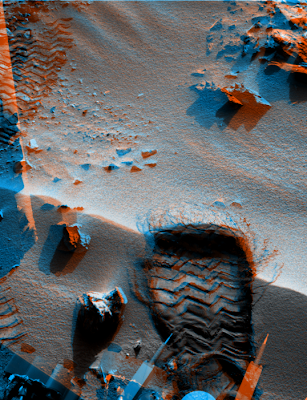src: nasajpl
At Tuesday's teleconference the MSL project scientists discussed the results of the first xray diffraction measurements made on another body of the solar system. Using xray diffraction equipment that had been reduced from the size of a refrigerator on Earth to that of a shoe box for the mission they were able to capture the diffraction pattern of finely divided particles to determine the minerals present. The minerals were basaltic and similar to feldspar, pyroxene and olivine. The particles are believed to be a mixture of blown in dust and local particles along with volcanic glasses and their weathered products. telecon images and related press release























